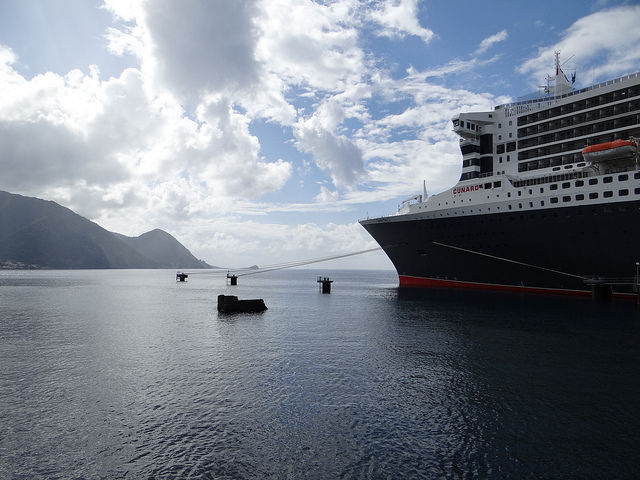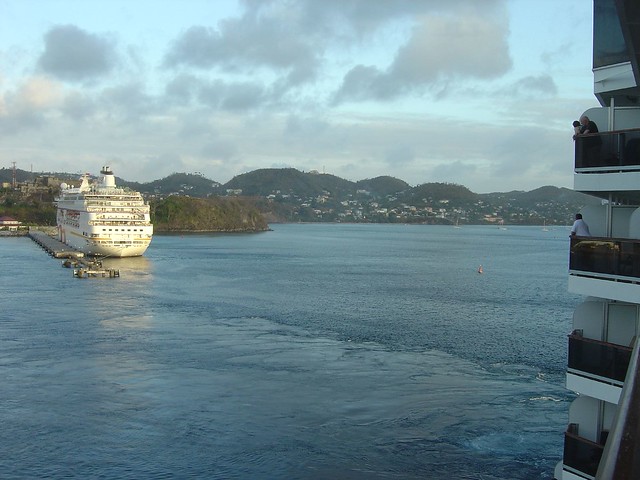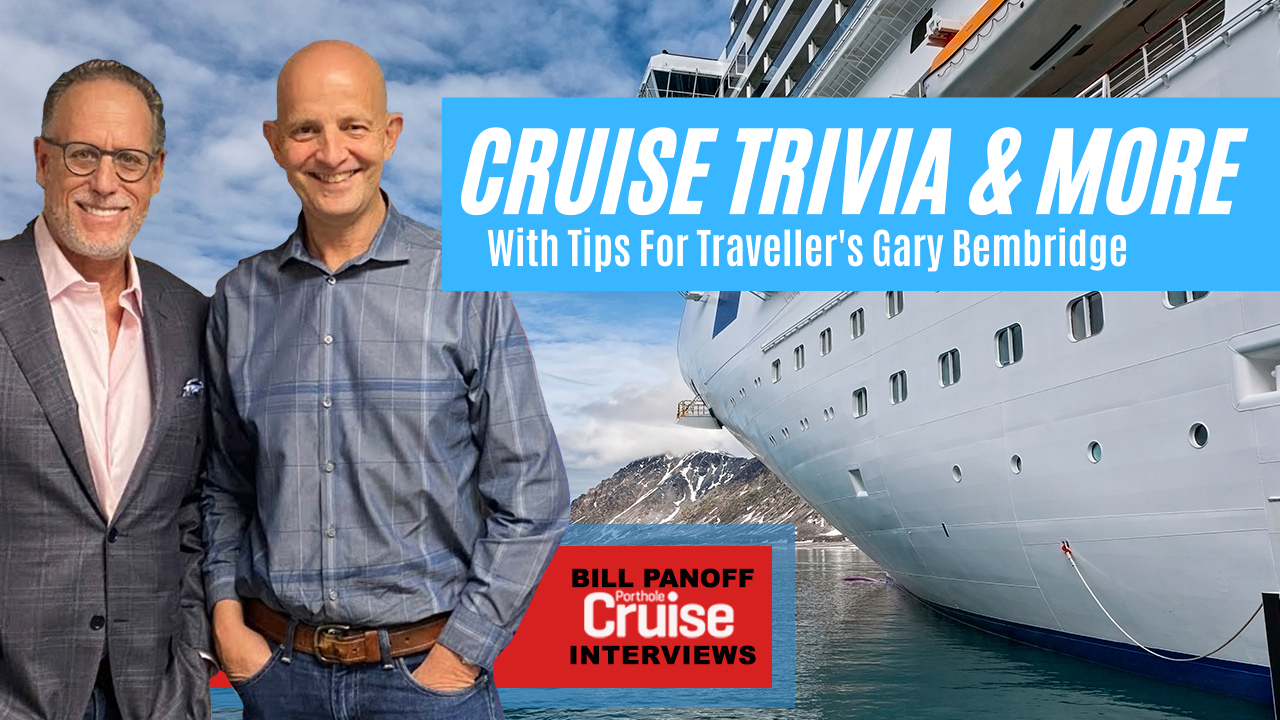What should you expect when cruising the Caribbean?
Something like 60% of all cruises in the world today take place in the Caribbean! Why is the case, and should you consider cruising the area?
The next most popular destination is Alaska. I find the fact that the Caribbean so dominates the world of cruising quite staggering. In reality it probably reflects more the history of cruising which really grew and developed in the area, driven by companies like Carnival and Royal Caribbean operating out of Miami in the USA. It is also a reflection of how developed the USA cruising industry is, and how it is still underdeveloped in other parts of the world. It is no wonder then that the building of ships seems to be almost frantic with all the growth potential as cruising catches on in other parts of the world.
What are the main features of the Caribbean Cruise industry?
- The Caribbean cruise season runs from after the hurricane season from around September until March each year, and then the cruise ships are redeployed onto the Alaska route or head off to Europe to ply the Mediterranean and Baltic in the summer in the Northern Hemisphere.
- Most of the Caribbean cruises are, and pretty much always have been, 7-day trips out of Florida where ships alternate between a “Western Caribbean” and an “Eastern Caribbean” routing. This pattern ideally suits the USA vacation patterns, as most people in the States tend to have and take shorter holidays than other regions so the 7-day pattern suits them. For those wanting 2 weeks vacations, then all they do is stay on a ship for two back to back cruises.
- The 7 day cruises tend to have one sea day to get to the islands, visits to 5 islands and then one sea day back to port. The growth of popularity of the cruising has, though, started to see many more USA ports offering Caribbean trips – and the area is by far the most popular part of the world for European Cruise lines like Cunard, P&O and Costa to send their ships to during the European winter. Or, in the case of Cunard, in the period running up to the New Year when it tends to be too rough and is too cold for people to book on their famous transatlantic crossings. It fills in the period before they send their ships on their 3 month round the world cruises from January to March.
- At the start and end of the Caribbean “season” many cruise lines include Caribbean legs into their ship “repositioning” schedules. My first Caribbean Cruise was part of what is called a “repositioning cruise” on the P&O ship Arcadia. There is a redeployment of ships, especially to and from Europe, before and after the main September to March Caribbean season. Most cruise lines doing this offer 2-week trips, which consist of a week cruising round the Caribbean and a week crossing the Atlantic. These cruises tend to be very good value as less people enjoy the long periods at sea and prefer schedules with lots of ports.
What is the impact of this huge cruise industry to the Caribbean?
My first Caribbean cruise in 2007 also happened to coincide with the 200th anniversary of the abolition of slavery which was timely as traveling around the islands we visited (Barbados, Grenada, St. Lucia, St. Kitts and Antigua) the one thing that did strike me, as I learnt more about the history of the Caribbean, was that these stunningly beautiful islands were not only built on the back of slave labor, but also just how brutal and terrible the slave trade was.
An unpleasant history….
- Behind the laid back tone and startling beauty of the Caribbean is an unpleasant tale, with the `British and French primarily squabbling and fighting over control with the indigenous Carib Indians being driven out and even massacred sometimes to take control of the islands.
- They then shipped in slaves from North Africa mostly in horrific conditions where many would perish on the trip. They were then sold in markets held in what are now picturesque and charming town squares. The slaves were required to work in the huge sugar plantations that soon covered most of the islands, with cruelty and force ensuring compliance.
- It is clear that the sugar plantations owners, all of who were from Europe, grew very wealthy on the practice and the sugar trade. But as the sugar trade declined it also has left the islands largely under developed, as the profits had been shipped out and not invested into the place that created the money. This means that now that the sugar industry has pretty much died, both due to declining popularity for sugar and also cheaper and more cost effective crops like sugar beet closer to the main markets, that the only real industry the Caribbean has is tourism – and especially the cruise business.
Cruise industry impact on the Caribbean: Good or bad for the islands?
Depending on whose point of view you follow, or possibly where your political leaning is, the islands are either benefiting enormously from the cruise trade – or are being shortchanged and manipulated by the cruise industry that passes little of the financial benefits on the islands.
There is an interesting debate on this and one I found made fascinating reading and gave me deeper insights about how the while cruise industry works.
- The view against:
- On the one side of the debate are a series of interesting books by an author called Ross Klein who wrote “Cruise Ship Blues” and other books that talk about how the industry plays islands off against each other to drive lower revenue for the island and more for themselves. For example, he talks about how cruise ships do not restock supplies and the like on the islands but only in their home ports for the main, that they keep the bulk of revenues from tours and such like and that international firms own many of the chains in the new port side malls that have been built.
- The view for:
- On the other side of the argument are the materials from the main cruise body called CLIA. Their site is cruising.org, and the organization talks about the money they spend on assisting with infrastructure and the overall benefits from the money passengers spend on-shore. Either way it makes for really interesting reading and it is worth hearing both points of view.
One thing that you cannot help to note on all of the islands is that they overall do seem fairly poor and underdeveloped. There are, of course, glitzy hotels but these again seem to be owned and operated by the major chains. Of course they are an important employer of locals but it is a pity that you do not see more local enterprise here.
So despite these observations what else struck me while cruising the Caribbean?
These are based on visits to Barbados, Grenada, St Lucia, St Kitts and Antigua. Click on the links for specific reviews and photos of each of the islands.
- I loved all the islands. They are all so beautiful and the beaches are glorious. In most cases the people are welcoming and friendly, which is quite a feat when they are subjected to waves of tourists during the cruise season in particular asking the same questions and doing the same things.
- I have to admit though one of the challenges of visiting so many islands in quick succession for one day on a cruise if that they do kind of blend into each other as an overall Caribbean experience.
- So while beautiful, I did wonder if the islands have missed an opportunity to be more unique and distinctive. I am sure that if you spent more time on each you would get to understand and appreciate their distinctiveness, but the cruise experience does not do that justice. I am embarrassed to admit that I think that if I was not an obsessive photo taker and so have piles of images from everywhere, that I would not clearly be able to remember which island was which. Of course the trip on the island I can associate but from the non-trip elements from the port, walking around the town is where it starts to get less clear.
- This seems like a missed opportunity. Admittedly the broad history of the islands is broadly similar (English and French fighting over them, largely English dominating, driving out the Carib Indian locals, importing slaves to drive the sugar industry), but I do think that there is way to find more uniqueness in the culture and story of each island. But this is probably more of the marketing background in me coming out, as I am not sure my fellow travelers thought as much about this.
- The Port areas are all now very similar and this is a result in most cases of original facilities being destroyed at the turn of the century by hurricanes and being rebuilt to meet the needs of the current ship types and passengers in a more harmonious way. Disappointingly though, most of the shops in these ports are also the same with even the same chains, like the Diamond International chain for example.
- Even the curio/ gift shops are stocked full of largely similar merchandise with the name changed. Much of the merchandise was made in China and even the UK (most of the china items). At the risk of going on, I did feel it was pity but saved on buying a lot of items from each island.
- As a UK resident, visiting the islands has a lot of familiarity in a number of respects as the cars drive on the left hand side and many of the street names and places are familiar names from UK history and places like Piccadilly Circus and Nelson’s Dockyard. As you get further North, the islands start to have a more American flavour, but their roots in British Colonialism reeks everywhere you go. Though I did notice that the more south the islands the more laid back people were and the closer we got to the USA the more assertive. I am not sure if these islands get more ships and passengers and so the islanders have become more competitive with each other.
- If you go on a classic Caribbean cruise with basically an island a day, it can be a tiring experience as you will be up early as ships get in usually around 7am to 8am and then you are off on trips and set sail at about 5pm and 6pm then still to have the dinner, shows and other activities in the evening to enjoy. It can become a bit of a blur if you don’t pace yourself. With the repositioning cruise we had a great balance as we had the busy 5 days at the start and then the 5 sea days to really relax.
There is no denying though that whatever observations and thoughts about similarities, the Caribbean and a cruise in this area is just a stunning experience. I adore the place. The islands are beautiful, the beaches and sea glorious and the people on most of the islands for the most part are charming, welcoming and surprisingly patient.
Have any thoughts and tips? Please leave a comment below, and share using the social media buttons too!
More articles on the Caribbean and Cruising at TipsForTravellers.com/cruising














